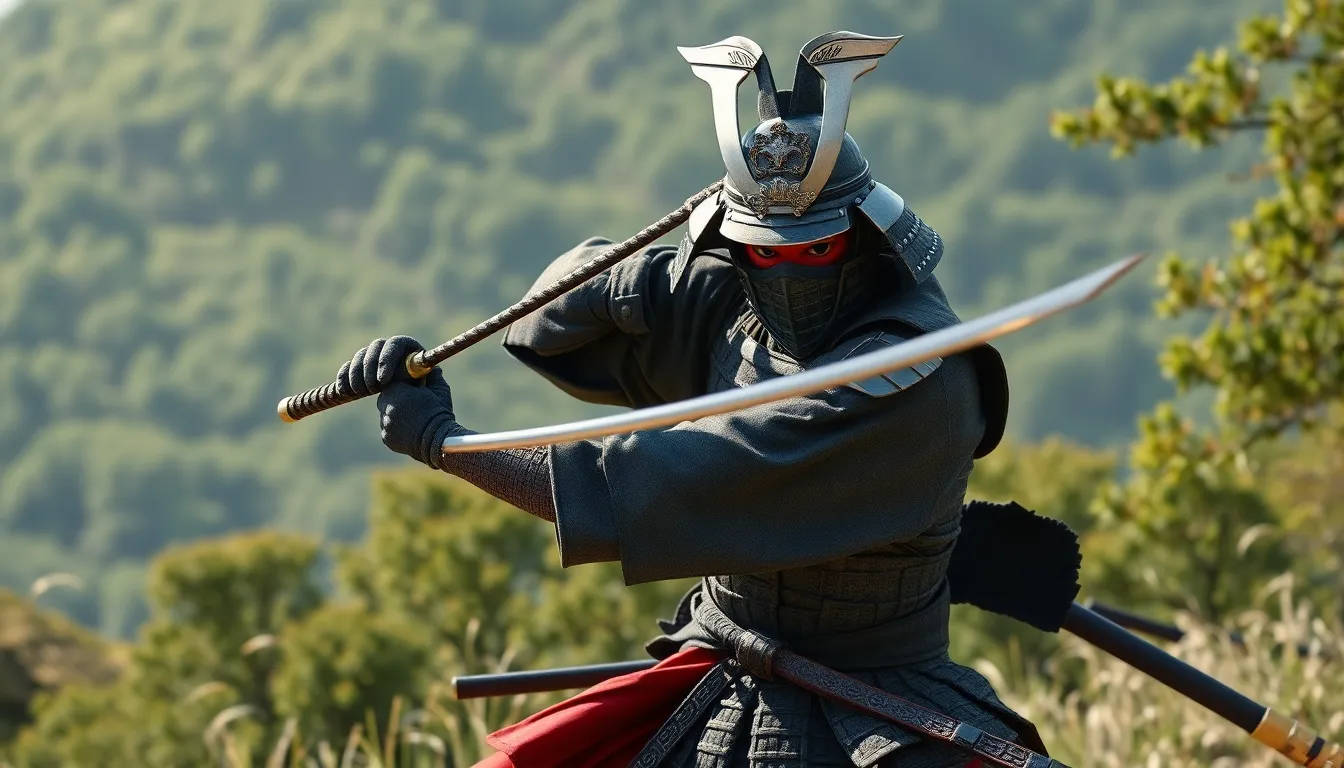Table of Contents
ToggleIn the vast open world of Ghost of Tsushima, players don’t just wield a sword; they dance with the wind. The Wind Stance isn’t just another fighting style; it’s a whirlwind of strategy and style that turns battles into breathtaking performances. Imagine slicing through enemies like a hot knife through butter, all while looking effortlessly cool.
This stance is the secret weapon for those brave enough to face the Mongol hordes. It’s not just about combat; it’s about embracing the spirit of a samurai. So, if you’re ready to unleash your inner ghost and leave your foes in a gusty daze, buckle up! This guide will take you through everything you need to know about mastering the Wind Stance, proving that sometimes, the best offense is a little wind in your sails.
Overview of Ghost of Tsushima
Ghost of Tsushima is an open-world action-adventure game set in feudal Japan. Players assume the role of Jin Sakai, a samurai warrior who combats the Mongol invasion. The game emphasizes exploration, allowing players to navigate lush landscapes and discover various challenges. Combat serves as a core component, featuring a dialogue between samurai honor and the need for stealth.
Combat mechanics include multiple stances, each tailored to counter different enemy types. The Wind Stance specifically excels against sword-wielding foes, showcasing its effectiveness in tactical maneuvers. This stance enhances Jin’s offensive potential, making battles more dynamic.
Exploration leads players to encounters that emphasize Jin’s growth as a warrior. Unlocking new techniques and upgrades allows for strategic adaptations during combat. As players progress, they can refine their skills, which encourages experimentation and creativity in combat scenarios.
Visually stunning environments enrich the gaming experience. Players engage with history, culture, and stunning scenery, immersing them in the world of samurai. The narrative unfolds through captivating storytelling rather than linear progression.
Ghost of Tsushima balances action with narrative depth, making it compelling for players. They face moral choices that resonate with samurai philosophy while experiencing the turbulent period of Japanese history. This blend of gameplay and storytelling creates a unique setting that captures the essence of samurai culture.
Understanding Wind Stance

Wind Stance represents a critical element in Ghost of Tsushima’s combat system. This stance empowers players to execute strategic maneuvers against specific enemies.
Importance of Stances in Combat
Stances play a vital role in combat, enabling players to adapt their fighting style based on opponents. Each stance, including Wind Stance, targets distinct enemy types, enhancing battlefield effectiveness. Foes wielding swords become vulnerable against Wind Stance, allowing players to counter their attacks efficiently. Skillful utilization of stances creates opportunities for devastating combos and counterattacks. Mastering these stances increases flexibility, enabling players to navigate dynamic combat scenarios with ease.
How Wind Stance Works
Wind Stance facilitates fast-paced slashes that disrupt enemy defenses. Players can unleash swift attacks that break through an opponent’s guard. Executing a perfect dodge while in this stance provides a critical opening for immediate counterattacks. Wind Stance emphasizes agility, encouraging players to prioritize speed over raw power. Engaging in this stance not only grants an edge against sword-wielding enemies but also integrates seamlessly with other combat techniques. Understanding the mechanics of Wind Stance elevates players’ overall performance in battles.
Advantages of Using Wind Stance
Wind Stance offers distinct advantages that enhance combat dynamics in Ghost of Tsushima. Players benefit from its specific design aimed at targeting sword-wielding enemies effectively.
Effectiveness Against Specific Enemies
Wind Stance excels against swordsmen, exploiting their reliance on melee attacks. This stance allows Jin to perform quick slashes, disrupting opponents before they can fully execute their moves. Fast strikes create openings, enabling players to initiate devastating combos. Speed becomes a vital asset in such encounters, allowing Jin to outpace adversaries. Each swift attack hampers enemy defenses, ensuring a strategic advantage. Overall, Wind Stance transforms encounters with sword-wielding foes into confrontations of precision and agility.
Enhanced Combat Strategies
Players can elevate their gameplay by incorporating Wind Stance into broader combat strategies. This stance encourages a fast-paced, aggressive style, challenging players to maintain momentum. Combining Wind Stance with other techniques enhances overall effectiveness. Seamless transitions between stances enable players to respond dynamically to varying threats. Players can quickly switch to other stances as needed, ensuring adaptability on the battlefield. Emphasizing agility, Wind Stance not only improves offensive capabilities but also supports defensive maneuvers. Overall, it plays a crucial role in maximizing Jin’s potential throughout the game.
Tips for Mastering Wind Stance
Successfully mastering the Wind Stance in Ghost of Tsushima enhances combat efficiency. Players can leverage this stance to dominate sword-wielding enemies effectively.
Timing and Execution
Execution of Wind Stance focuses on precise timing. Players must learn to read enemy movements, striking just before a foe can launch an attack. Anticipation of enemy actions sets up opportunities for swift counterattacks. Practicing block-and-slash sequences strengthens this skill. Executing the Wind Stance’s quick slashes requires rhythm and a keen sense of timing. Mastery leads to successful evasions while maintaining offensive pressure. Consistency in practice accelerates improvement.
Combining Wind Stance with Other Techniques
Integration of Wind Stance with other combat techniques enhances Jin’s effectiveness. Players should alternate between stances, creating fluid transitions during fights. Combining Wind Stance with dodging further amplifies agility, allowing for rapid responses to threats. Utilizing Grappling Hooks or smoke bombs during combat can also create openings for quick strikes. Effective pairing with upgrades, such as enhanced damage or additional combos, produces superior results. Experimentation with various techniques showcases flexibility in gameplay. Players find success when they merge aggressive and defensive tactics seamlessly.
Mastering the Wind Stance in Ghost of Tsushima is essential for any player looking to enhance their combat experience. This stance not only showcases the elegance of samurai fighting but also provides a strategic advantage against sword-wielding enemies. By focusing on agility and speed, players can disrupt their opponents and create openings for powerful counterattacks.
Incorporating Wind Stance into broader combat strategies allows for dynamic gameplay that keeps enemies on their toes. With practice and an understanding of timing, players can fully unleash Jin’s potential. Embracing this fighting style transforms encounters into thrilling displays of skill and precision, making every battle an opportunity for triumph.







